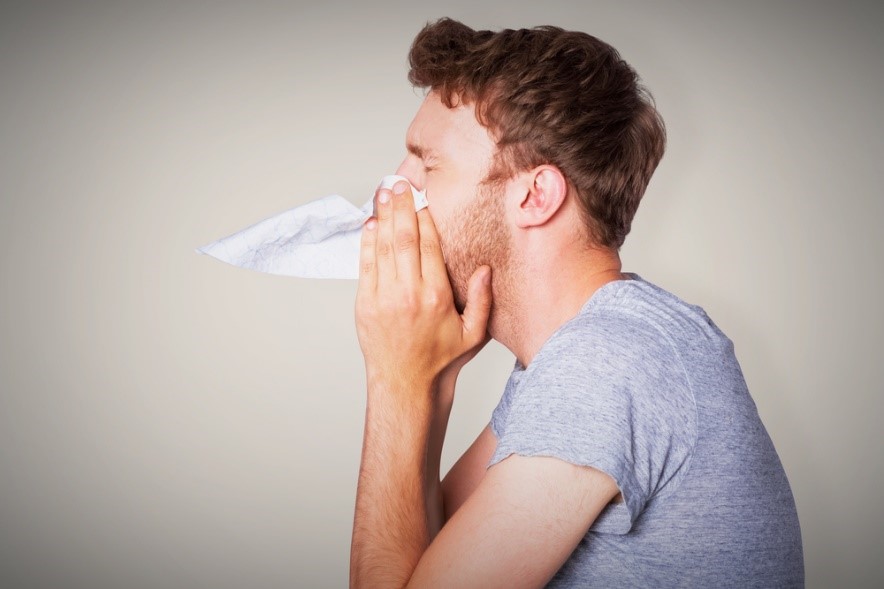The Stages of COPD: What Each Stage Means for Your Health
Chronic Obstructive Pulmonary Disease (COPD) is an ever-increasing illness in India. As per the World Health Organisation, this condition is the fourth-leading cause of death in the world, and it caused approximately 3.5 million deaths in 2021.
However, COPD is treatable, and being able to identify the condition and seek treatment is crucial for timely treatment and recovery. This article will discuss COPD, its symptoms, causes, stages, and diagnosis.
What is COPD?
Chronic Obstructive Pulmonary Disease (COPD) is a lung condition caused by extensive damage to the lungs. It causes inflammation (or swelling and irritation) inside the airways, causing an obstruction in airflow in and out of the lungs.
COPD’s two main forms are emphysema and chronic bronchitis, which typically appear together. While COPD is treatable, an early diagnosis and treatment are necessary to manage it. However, if not detected in time, COPD can worsen and lead to other conditions like lung cancer and heart disease, and in extreme cases, be fatal.
What Causes COPD?
The most common COPD causes include:
- Smoking: This is one of the primary causes of COPD. This also applies to individuals who are exposed to second-hand smoke.
- Air pollution: Air pollution can also increase the chances of developing this condition.
- Asthma: Having asthma and smoking can be a risk factor for developing COPD.
- Exposure to chemicals and fumes: Exposure to chemicals and harmful fumes, air pollutants, and burning fuel for cooking and heating can also be a risk factor for developing the condition.
- Genetic factors: It is estimated that people who have a deficiency in the alpha-1-antitrypsin protein may be at a greater risk of developing COPD.
What are the Stages of COPD?
COPD is a progressive disease. It starts mild, with symptoms that are difficult to detect but can quickly worsen as it progresses in stages. There are four COPD stages, which can be determined using spirometry and other tests. These include:
-
- Stage 1 This is the earliest stage of COPD, and it is difficult to detect changes or problems in lung function. In this stage, COPD symptoms may not be present. Some signs include coughing and increased mucus production, which can be confused for other common illnesses like a cold or flu. Doctors may use a spirometry test to determine an individual’s Forced Expiratory Volume (FEV). In Stage 1 COPD, the FEV grade assigned ranges from 80% to 100%.
- Stage 2 The second stage can present with more noticeable symptoms, and an individual’s FEV can drop to between 50% and 79%. The COPD symptoms may also worsen, including increased mucus production and coughing, shortness of breath during exercise or walking, and more. Individuals with these symptoms should consult a medical professional for a COPD diagnosis.
- Stage 3 By the time individuals reach the third stage of COPD, the illness is considered to be severe and may cause the affected person to require oxygen. It decreases the individual’s FEV from 30% to 50% and can cause more severe symptoms. These include:
–A worsening cough and mucus production compared to the earlier stages
–Shortness of breath while performing everyday tasks.
–Tiredness and difficulty leaving the house
–Frequent illnesses like cold
–Swelling in the ankles
–Wheezing and tightness in the chest
4. Stage 4 Also known as End-Stage COPD, the fourth stage is associated with severe illness. The affected individual’s FEV reduces to below 30%, leading to dangerously low blood oxygen levels. Those who reach this stage of the disease are more likely to develop other conditions like lung diseases and heart failure. Flare-ups of symptoms can also be fatal in this stage. Symptoms include:
● Wheezing and difficulty breathing, even when at rest
● A crackling sound when breathing in
● Constantly being out of breath
● Delirium, weight loss, and pulmonary hypertension
● A fast or irregular heartbeat
How is COPD Diagnosed?
There are several tests for COPD, including:
- Spirometry tests for FEV
- Imaging tests, like CT scans and X-rays
- Pulse oximetry tests
- Lung volume and lung diffusion tests
- Exercise stress tests
- Blood tests, such as the arterial blood gas analysis, testing for AAT protein deficiencies, and other blood tests to look for underlying conditions.
How is COPD Managed and Treated?
COPD treatment varies depending on the stage and severity of the illness. It can include a range of treatments, including medications, inhalers, steroids, and antibiotics. Medical professionals may also prescribe oxygen therapy, pulmonary rehabilitation programs, and ventilation therapy. In extreme cases, surgery may be required. However, avoiding smoking is one of the most common ways to prevent and slow down the symptoms of COPD.
If an individual is experiencing any symptoms of COPD, it is essential to consult a medical professional for further testing and treatment. Visit Dr Lal PathLabs today for accurate lung function tests.
FAQs
1. What are the symptoms of COPD?
Some common COPD symptoms include shortness of breath, coughing, mucus buildup, and wheezing.
2. Is COPD curable?
While incurable, it can be controlled with early and proper treatment.















